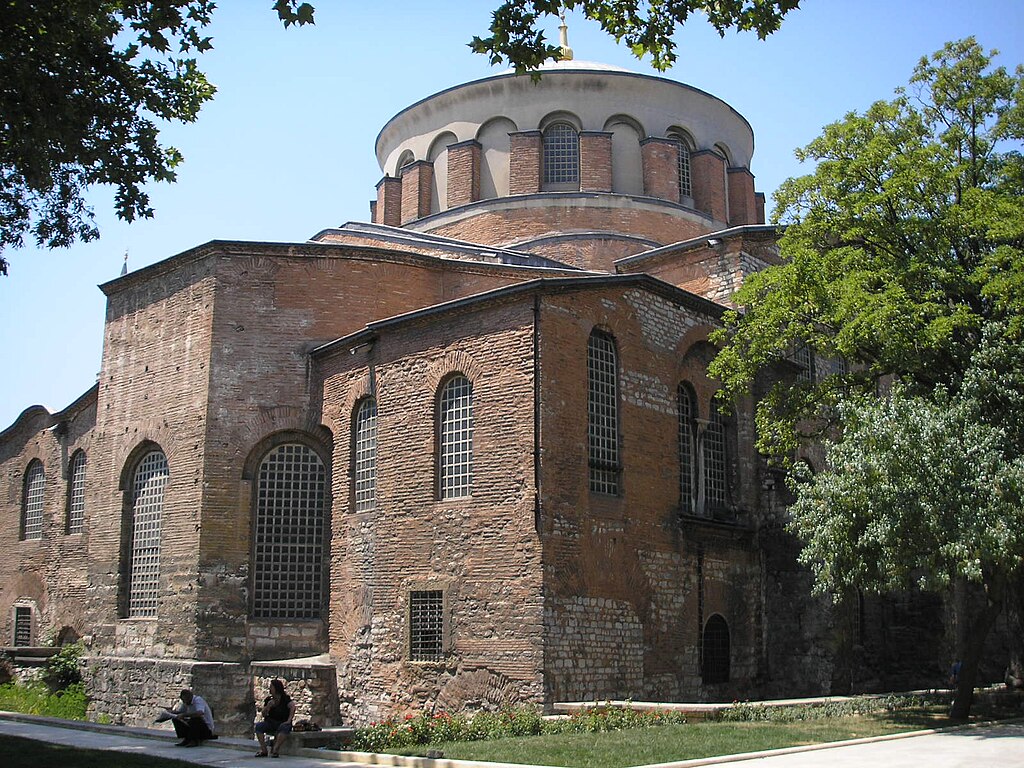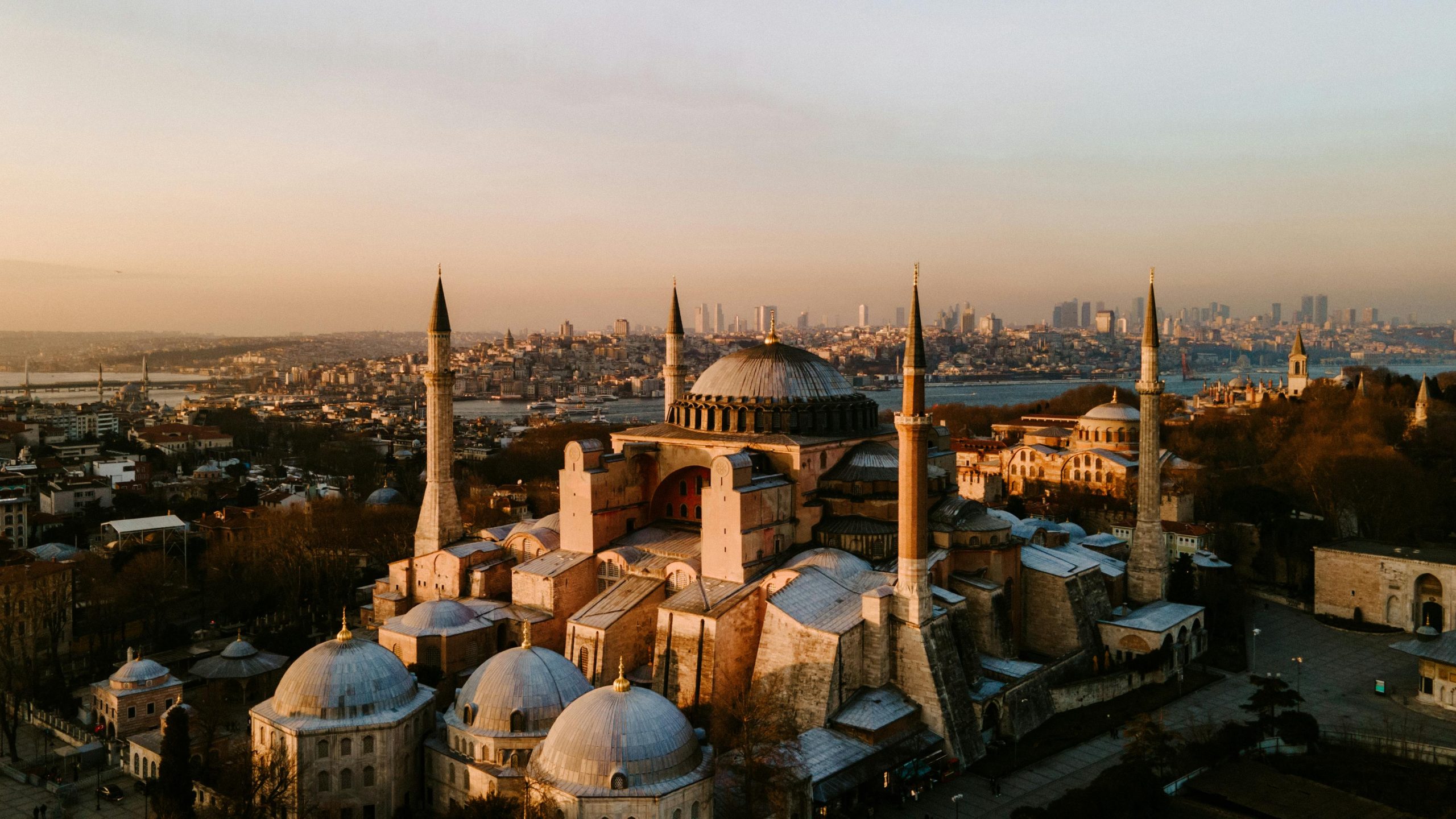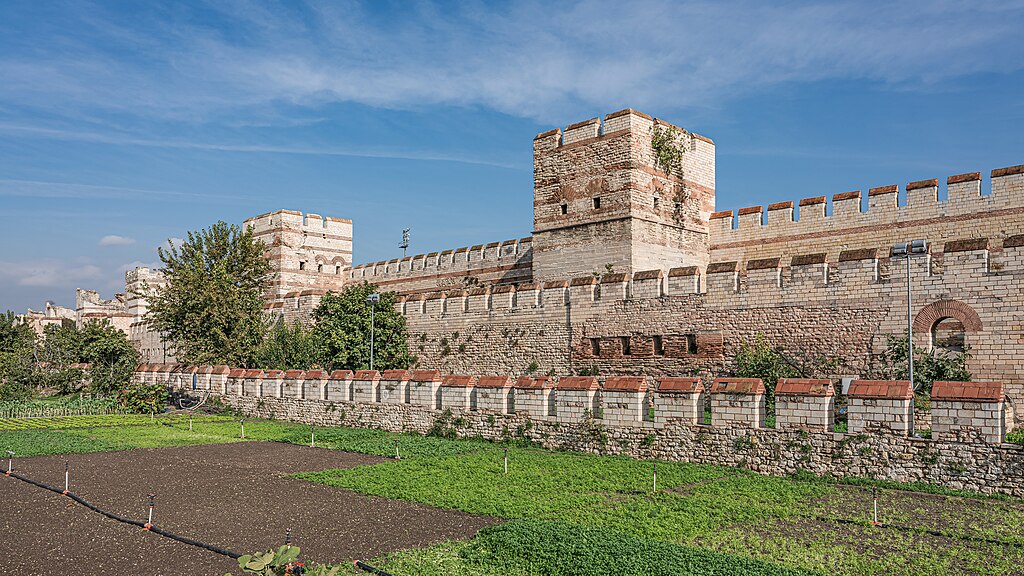Hagia Irene, Istanbul
Church and Museum in Istanbul

Tucked within the outer courtyard of Topkapi Palace, Hagia Irene — meaning “Holy Peace” in Greek — is one of Istanbul's most historically profound monuments. Built by Emperor Constantine the Great in the 4th century, it predates even Hagia Sophia and stands as the city's oldest surviving church. With its solemn brick façade, spacious nave, and hauntingly pure acoustics, Hagia Irene is one of the must-see places in Istanbul for anyone fascinated by early Christian architecture and Byzantine heritage.
Once the main church of Constantinople before the completion of Hagia Sophia, Hagia Irene today serves as both a museum and a concert hall. Its austere beauty and echoing interior make it a great place to visit on a walking tour of Istanbul's historic peninsula, offering a moment of calm reflection away from the city's bustling crowds.
History and Significance of Hagia Irene
The original Hagia Irene was built in the 4th century on the site of a pre-Christian temple by Emperor Constantine I, as part of his grand vision for the Christian capital of the Roman Empire. It was one of the first churches constructed in the newly renamed city of Constantinople. After being destroyed in the Nika Revolt of 532, it was rebuilt under Emperor Justinian I in 538 — the same ruler who later completed Hagia Sophia. Before that, Hagia Irene served as the city's Patriarchal Church, making it the original center of Byzantine Christianity.
The current structure retains much of its early Byzantine design. It follows the traditional basilica layout, with a high central nave flanked by aisles and divided by marble columns. Its most remarkable feature is the surviving atrium — a rare element of early church architecture that has disappeared from nearly all other Byzantine sites in the city. Emperor Constantine V later added frescoes and mosaics, including the striking apse cross that replaces human figures, reflecting the iconoclastic period when religious imagery was discouraged.
Things to See and Do in Hagia Irene
Step inside Hagia Irene, and you'll find a space of serene grandeur. Unlike the ornate interiors of later Byzantine and Ottoman monuments, this church emphasizes harmony and proportion. Sunlight filters through the windows, highlighting the brickwork and arches that have stood for nearly 1,500 years. The acoustics are extraordinary — so pure that the building regularly hosts classical music concerts during the Istanbul Music Festival, transforming it into a stage for sound as much as for history.
Visitors can admire the simple yet powerful symbolism of the apse mosaic: a large cross set against a golden background. It's one of the few surviving examples of non-figurative Christian art from the iconoclastic era. The church's atrium — an open courtyard once used for gatherings — is another highlight, offering a glimpse into how early Christian basilicas functioned as both spiritual and communal centers. Even without lavish decoration, Hagia Irene's quiet majesty makes it unforgettable.
How to Get There
Hagia Irene is located within the outer courtyard of Topkapi Palace in Istanbul's Sultanahmet district. It's easily accessible by the T1 tram line, with Sultanahmet and Gülhane being the nearest stops, both within a few minutes' walk. For visitors arriving by train, Sirkeci railway station is about 10 minutes away on foot. You can use the official TCDD Taşımacılık website to check schedules, compare routes, and purchase tickets for Turkey's national and regional trains operated by TCDD. For a more streamlined experience (especially if you prefer an English interface or want to compare across countries), we recommend using Omio, which allows you to easily compare prices, schedules, and book train tickets across Turkey and the rest of Europe — all in one place. For drivers, parking is available along Kennedy Avenue near the palace entrance. If you are looking to rent a car in Turkey I recommend having a look at Discover Cars, first, as they compare prices and review multiple car rental agencies for you.
Practical Tips on Visiting Hagia Irene
- Best time to visit Hagia Irene: Late morning or early afternoon for the best natural light inside.
- Entrance fee in Euros: Around €1 (20 TL).
- Opening hours: Daily from 9:00 AM to 6:00 PM (except Tuesdays).
- Official website: https://muze.gen.tr/muze/ayairini
- How long to spend: 30–45 minutes.
- Accessibility: Accessible via paved walkways; some uneven steps at entry.
- Facilities: Restrooms and cafés nearby within the Topkapi Palace area.
- Photography tip: Capture the interplay of light and shadow across the nave's arches.
- Guided tours: Available as part of Topkapi Palace and Byzantine heritage tours.
- Nearby food options: Cafés and restaurants around Gülhane Park and Sultanahmet Square.
Is Hagia Irene worth visiting?
Absolutely. Hagia Irene is one of the top sights in Istanbul for lovers of early Christian architecture and Byzantine history. Its simplicity contrasts beautifully with the splendor of Hagia Sophia, offering a rare sense of purity and peace. Whether you're drawn by its history, architecture, or acoustics, the experience is deeply atmospheric — a moment of timeless serenity in the heart of the former empire.
FAQs for Visiting Hagia Irene
Is Hagia Irene part of Topkapi Palace?
It stands in the palace's outer courtyard and can be visited separately from the main museum complex.
Is it still used as a church?
No, it functions as a museum and occasional concert venue.
Are there any mosaics of saints or figures?
No, the main mosaic is a large cross — typical of the iconoclastic period.
Can I attend a concert there?
Yes, Hagia Irene hosts performances during the annual Istanbul Music Festival and other cultural events.
Is it air-conditioned?
No, but its thick stone walls keep the interior pleasantly cool year-round.
Nearby Attractions to Hagia Irene
- Topkapi Palace – The former residence of Ottoman sultans, filled with treasures and courtyards.
- Fountain of Ahmed III – An exquisite 18th-century fountain just outside the palace gate.
- Hagia Sophia – The city's most famous Byzantine masterpiece, a short walk away.
- Gülhane Park – A peaceful green space that once formed part of the palace gardens.
- Istanbul Archaeology Museums – A remarkable collection of ancient artifacts from across the empires.
The Hagia Irene appears in our Complete Guide to Visiting Istanbul!
This website uses affiliate links which may earn a commission at no additional cost to you!
Visiting Hagia Irene
Nearby Attractions
- Sogukcesme Street (0.1) km
Street in no_link - Hagia Sophia (0.1) km
Cathedral and Mosque in Istanbul - Istanbul Archaeological Museum (0.2) km
Museum in Istanbul - Topkapi Palace (0.3) km
Palace in Istanbul - Basilica Cistern (0.3) km
Historic Building in Istanbul - Hurrem Sultan Hamam (0.3) km
Baths and Historic Building in Istanbul - Stone of Milion (0.3) km
Historic Site in Istanbul - Sultan Ahmet Park (0.4) km
Park in Istanbul - German Fountain (0.5) km
Fountain in Istanbul - Arasta Bazaar (0.5) km
Bazaar in Istanbul


